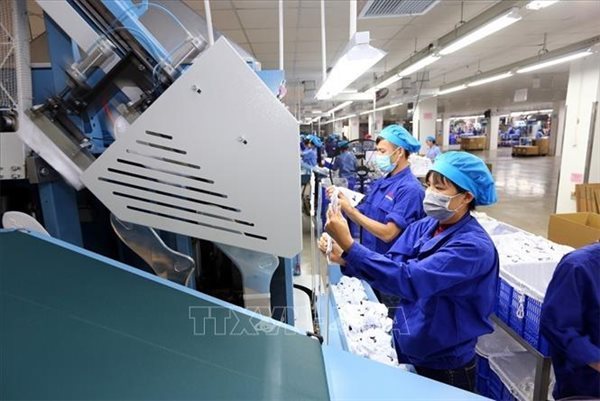Covid-19 has caused enterprises to diversify supply sources, accelerating the process of relocating production to Southeast Asian countries, including Vietnam.

Apple, for example, has decided to produce 30 percent of wireless headphones AirPods in Vietnam instead of China.
According to ManpowerGroup Vietnam, fast-moving consumer goods, transportation services, supply/logistics chains, agriculture, and food and beverage production chains have begun recovering.
Online commerce companies are believed to need more workers for different posts, from high-ranking to low-level. The demand will also be increasing in fintech, e-wallet, insurance tech, food tech, healthcare, medical equipment and new energy companies.
“We believe that recruitment activities will explode after the epidemic,” said Nguyen Xuan Son from ManpowerGroup Vietnam.
| In the ‘new normal’ after the epidemic, many enterprises have regained their original production pace, while others have sped up recruitment campaigns. |
In the ‘new normal’ after the epidemic, many enterprises have regained their original production pace, while others have sped up recruitment campaigns.
“Some of our clients in the manufacturing sector even increased production during Covid-19,” Son said.
LG Display has recently announced it is seeking more than 5,000 workers and 1,000 technicians. This is part of the plan to expand production after the epidemic to fulfill additional orders from foreign partners.
Meanwhile, Samsung Vietnam has announced a large-scale recruitment campaign in 2020. In a plan to expand production this year, Samsung Vietnam continues to recruit engineers and university graduates in many different majors from universities and institutes throughout the country.
Vietnam has been urged to prepare its labor force to catch the investment leaving China and heading for regional countries.
Though Vietnam is considered an attractive destination for investors in the production relocation wave, it still has a weak point which lies in the quality of the labor force. World Bank gave 3.79/10 scores to the Vietnamese labor force. Vietnam ranked 11th out of 12 surveyed countries in Asia.
In order to make the labor force attractive to foreign investors, according to Son, Vietnam should focus on developing skills, both professional and soft skills to increase productivity, rather than attract foreign investors with low labor cost.
Vietnam’s minimum wage increases by 5-5.5 percent a year. The minimum wage for Region 1 is VND4.48 million in 2020, an increase of 460 percent over the last 11 years.
Over five million employees nationwide lost their jobs in the first five months of 2020 as a result of the coronavirus pandemic, according to the Ministry of Labor, War Invalids and Social Affairs (MOLISA).
Chi Mai

Labor market freezes due to Covid-19
Large companies are not recruiting workers, while small and medium enterprises (SMEs) are laying off workers as they cannot maintain a big staff during the Covid-19 crisis.

Auto manufacturers manage to retain workers
While automobile manufacturers in the world have laid off workers in large quantities to reduce operation costs during the Covid-19 crisis, automobile joint ventures in Vietnam have retained their workforce.
 Worker demand is expected to soar after COVID-19. Businesses will expand recruitment activities as they need workers to revive production and grab opportunities from investors' relocation moves." itemprop="description" />
Worker demand is expected to soar after COVID-19. Businesses will expand recruitment activities as they need workers to revive production and grab opportunities from investors' relocation moves." itemprop="description" />